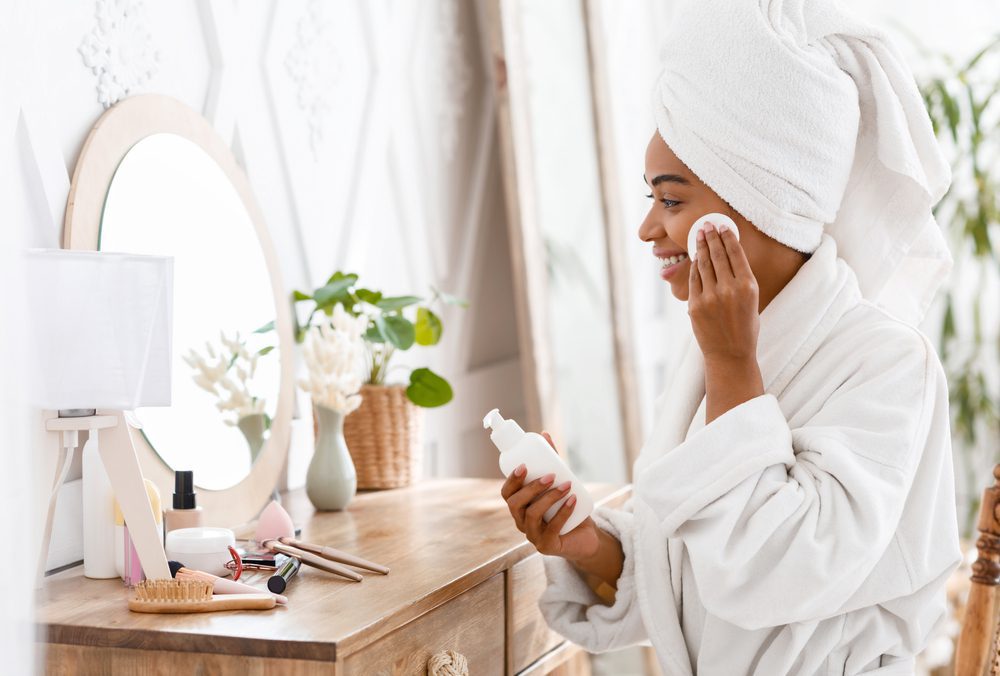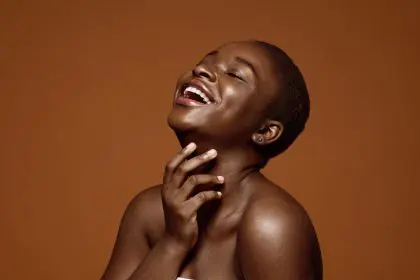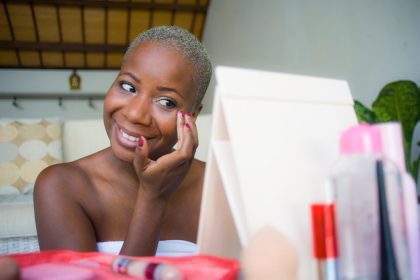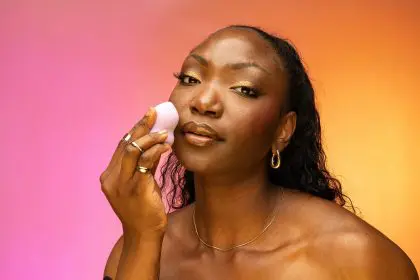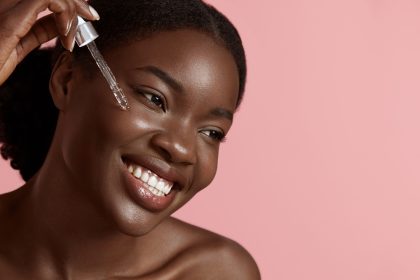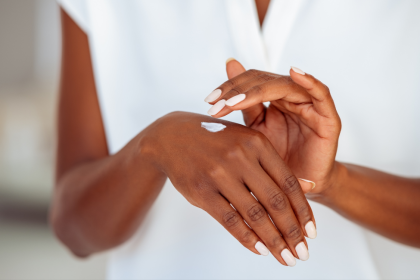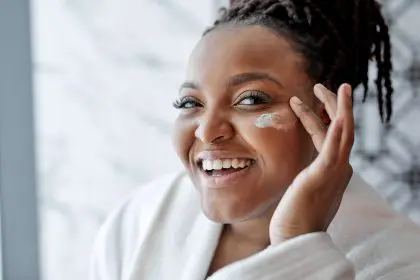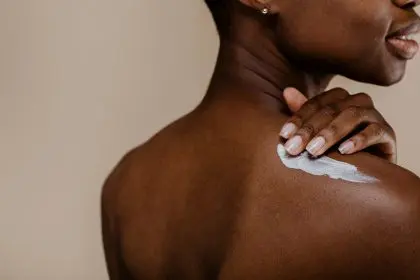How to achieve that coveted “no-makeup makeup” look that celebrates your features
The pursuit of natural-looking makeup represents a fascinating paradox in beauty culture: using products to create the illusion that you’re wearing almost nothing at all. This approach celebrates individual features rather than masking them, requiring both technique and restraint to perfect.
The evolution toward more natural makeup aesthetics reflects a broader cultural shift toward authenticity and self-acceptance. Yet achieving this seemingly effortless look often requires more skill than heavily applied makeup, as it demands precision, quality products, and an understanding of light, color theory, and facial structure.
At its core, natural makeup philosophy centers on enhancement rather than concealment—working with your unique features instead of trying to transform them into something else. This mindset shift changes everything from product selection to application techniques, creating results that look believable in any lighting condition.
The canvas matters more than the paint
The foundation of truly natural-looking makeup begins long before any product touches your face. Skin preparation serves as the critical first step that determines whether your final look appears genuinely natural or obviously made-up.
A consistent skincare routine addressing your specific needs creates the ideal base for minimal makeup. Gentle exfoliation removes dead skin cells that can cause makeup to appear patchy or settle into fine lines. Proper hydration ensures makeup melts into the skin rather than sitting visibly on top.
On makeup application days, begin with a lightweight moisturizer appropriate for your skin type, allowing it to fully absorb before proceeding. This creates a smooth, receptive canvas that helps makeup adhere evenly without requiring heavy application.
Primers serve a crucial role in natural makeup, though their purpose differs from traditional makeup approaches. Instead of creating a mask-like base, primers for natural looks focus on targeted concerns—blurring pores in the T-zone, adding subtle luminosity to high points, or providing minimal color correction without heaviness.
The time invested in skin preparation pays dividends in the amount of product needed later. Well-prepped skin requires significantly less coverage, allowing your natural skin texture and unique features to remain visible while still creating a more refined appearance.
Rethinking foundation as skin enhancement
Foundation represents the element most likely to make makeup look obvious and artificial. For truly natural results, it requires a complete mindset shift—approaching foundation as a selective skin enhancer rather than an all-over mask.
The product selection process begins with formula rather than coverage level. Lightweight, sheer formulations like tinted moisturizers, skin tints, and serum foundations contain higher ratios of skincare ingredients to pigments, creating a more seamless blend with natural skin.
Application technique proves equally important as product selection. Using fingertips rather than brushes for initial application warms the product, helping it melt into the skin for a more natural finish. The residual warmth from your hands essentially removes the barrier between product and skin.
Strategic placement represents the true secret of natural foundation application. Instead of applying product everywhere, focus on areas needing evenness—typically the center of the face, around the nose, and any areas with redness or discoloration. Leave other areas bare, allowing your natural skin to show through.
When additional coverage is needed for specific concerns, targeted concealing proves more effective than increasing overall foundation. Spot-concealing with a small brush places product precisely where needed without unnecessary coverage elsewhere, maintaining the natural skin appearance in surrounding areas.
The natural brow approach: structure with subtlety
Eyebrows frame the face and significantly impact whether makeup appears natural or obviously applied. The current trend toward natural-looking brows focuses on structure and definition rather than heavily filled shapes that can immediately signal “makeup.”
Product selection plays a crucial role in natural brow appearance. Brow gels with fibers add volume and definition while maintaining a hair-like appearance. For sparse areas, brow pens with micro-fine tips create strokes indistinguishable from actual hairs when applied with a light hand.
Application technique for natural brows begins with brush direction. Following the natural growth pattern—typically upward and outward—instantly creates a more realistic appearance than brows brushed into unnatural positions.
Color selection often proves most challenging in brow products. The most natural-looking shade typically falls one to two shades lighter than your hair color for dark hair, and one shade darker for blonde or light brown hair. This subtle contrast prevents the harsh appearance that signals obvious makeup.
For truly natural brows, embracing slight asymmetry is essential. Perfect symmetry rarely exists in nature, and attempting to create identical brows often results in an obviously made-up appearance. Instead, aim for balanced structure while allowing for the natural variations that make your face uniquely yours.
Eye enhancement without obvious shadow
Eye makeup often reveals amateur application most quickly, with harsh lines and obvious color placement immediately signaling “makeup.” Natural eye enhancement focuses on subtle definition that opens and brightens the eyes without visible product.
The technique begins with eyeshadow approaches that mimic natural shadows and highlights. Using neutral tones slightly deeper than your skin tone in the crease creates dimension without obvious color. Applying with fluffy brushes and extensive blending removes harsh edges that signal makeup application.
Strategic highlighting on the inner corners and center of the lid mimics the way light naturally hits the eyes. Using satin or subtle pearl finishes rather than obvious glitter creates dimension without drawing attention to the product itself.
Eyeliner application requires particular restraint for natural-looking makeup. Tight-lining—applying liner between lashes rather than above them—defines the eye shape without visible lines. Using dark brown rather than black creates softer definition for most skin tones, appearing as a natural shadow rather than obvious makeup.
Mascara application technique significantly impacts whether eyes look naturally defined or obviously made-up. Focusing application on the base of lashes and using a light hand toward the tips prevents the spidery, clumpy appearance that immediately signals heavy makeup. Brown-black formulas often appear more natural than pure black, especially on fair complexions.
Cheek color that mimics natural flush
Blush remains one of the most transformative yet potentially obvious makeup elements. The key to natural-looking cheek color lies in both product selection and precise application that mimics how the face naturally flushes.
Cream and liquid blush formulations blend more seamlessly with skin than powder versions, especially when applied before any setting powder. These formulas create a “from within” glow that appears to come from the skin rather than sitting visibly on top.
Color selection proves crucial for believable flush. Observing your natural coloration after exercise helps identify your authentic flush tone. Generally, fair skin tones flush pink or light peach, medium tones flush deeper peach or mauve, and deeper skin tones flush deep rose, berry, or terracotta.
Placement techniques for natural blush differ from traditional application. Rather than applying color directly to the apples of cheeks, focus on the area where natural flush typically occurs—slightly higher on the cheekbones and blended back toward the hairline. This mimics how blood naturally rises to the face.
For an ultra-natural approach, applying blush with fingertips rather than brushes helps the product melt into skin. The warmth from your fingers essentially removes the barrier between product and skin, creating a more seamless blend that appears to come from within.
Lip enhancement that honors natural shape
Lip makeup often presents the final opportunity to maintain or lose the natural makeup effect. Overly lined lips or unnatural colors immediately signal obvious makeup application, while subtle enhancement maintains the barely-there illusion.
The modern approach to natural lip enhancement begins with preparation. Regular exfoliation and hydration create a smooth canvas that allows color to apply evenly without emphasizing texture. Lip masks and dedicated lip balms address specific concerns before makeup application.
Product selection emphasizes formulas that enhance rather than mask natural lip color. Tinted balms, sheer lipsticks, and lip oils add dimension while allowing natural lip color to show through. These formulas also wear away more naturally than matte or long-wear options, which can create obvious lines as they fade.
For subtle definition without obvious lining, using pencils that exactly match your natural lip color creates structure without the telltale lined appearance. Applying with short feathery strokes rather than continuous lines helps the product blend with your natural lip line.
The most natural-looking lip colors typically stay within two shades of your natural lip tone, either lighter or deeper. This range enhances without creating the obvious contrast that signals heavy makeup application. Observing your lips after gently biting them reveals your most flattering natural-looking shade.
Setting for longevity without losing the natural effect
Even the most naturally applied makeup requires strategic setting to maintain its appearance throughout the day. The challenge lies in creating longevity without the powdery finish that immediately signals makeup application.
Selective powder application represents the key technique for natural-looking setting. Rather than applying powder throughout the face, focus on areas prone to shine or product movement—typically the T-zone, around the nose, and the center of the chin. This selective approach maintains natural luminosity in other areas.
Setting spray technology has revolutionized natural makeup lasting power. These formulations lock makeup in place without adding texture to the skin. Alcohol-free versions provide setting benefits without drying effects that can emphasize texture throughout the day.
For touch-ups that maintain the natural appearance, blotting papers remove excess oil without adding more product to the skin. This prevents the buildup that occurs when repeatedly adding powder throughout the day, which can quickly make makeup look heavy and obvious.
In areas requiring additional setting, pressing powder into the skin with a small brush rather than sweeping it across the face deposits product only where needed. This targeted approach preserves the skin-like quality in surrounding areas while controlling shine in specific zones.
Adapting natural techniques to different skin types
The principles of natural-looking makeup remain consistent across skin types, but the specific products and techniques require thoughtful adaptation to address individual needs while maintaining the barely-there appearance.
For dry skin types, emphasizing cream and liquid formulations creates the most natural appearance. These products blend seamlessly without emphasizing texture and provide additional hydration throughout the day. Setting becomes less necessary, with powder applied only in areas prone to product movement.
Oily skin types benefit from strategic mattifying rather than overall powder application. Using targeted oil-absorbing primers in the T-zone while leaving other areas more luminous creates a natural balance. Lightweight, oil-free gel formulations provide coverage without adding shine or slipping throughout the day.
Mature skin requires specific techniques to create natural-looking enhancement. Avoiding powder in areas with fine lines prevents settling and emphasizing texture. Cream formulations with subtle luminosity create dimension without obvious sparkle, while strategic color placement draws attention to areas of natural beauty.
For skin with specific concerns like rosacea or acne, color-correcting techniques applied before minimal foundation neutralize discoloration without requiring heavy coverage. This targeted approach addresses concerns while still allowing natural skin texture to show through in less affected areas.
The role of lighting in perfecting your technique
Understanding how different lighting affects makeup appearance proves essential for truly natural-looking application. What appears perfectly blended in one environment may look obviously applied in another.
Natural daylight provides the most revealing environment for checking makeup application. Examining your application in natural light—ideally by a window—reveals any harsh lines, unblended edges, or color mismatches that might be hidden in indoor lighting.
Office environments with fluorescent lighting tend to emphasize any ashiness or grayness in makeup while making texture more apparent. In these environments, slightly warming your color selection and using minimal powder helps maintain the natural effect.
Evening and restaurant lighting, often more golden and dim, allows for slightly more product without sacrificing the natural appearance. This environment forgives minor application issues but can make overly dewy formulations appear greasy rather than luminous.
For truly foolproof natural makeup, testing your complete application in multiple lighting environments before finalizing ensures your technique holds up regardless of where the day takes you. This reality check prevents the surprise of discovering too-heavy application when catching your reflection in different settings.
Building your natural makeup wardrobe
Creating a makeup collection specifically designed for natural-looking application often means selecting fewer, more versatile products rather than accumulating numerous options. This edited approach not only simplifies application but ensures consistent results.
Multi-use products represent the foundation of natural makeup collections. Cream colors that work on cheeks, lips, and eyes create cohesive color stories that appear more naturally harmonious. These versatile formulations also simplify application techniques and reduce the number of products visible on the skin.
Investing in quality base products yields significant returns in natural-looking results. Higher-quality foundations, tinted moisturizers, and concealers typically contain more sophisticated pigments that look more skin-like while requiring less product for desired effects.
Tool selection impacts both application efficiency and final appearance. Fingertips provide the most natural application for many products, while small, precise brushes allow for targeted placement where needed. Avoiding large powder brushes and opt instead for smaller, more controlled tools prevents over-application.
The most successful natural makeup collections focus on perfecting one versatile look rather than creating multiple options. This signature approach ensures you develop precision in application techniques while creating a recognizable personal aesthetic that enhances your natural features consistently.
The psychological benefits of natural-looking enhancement
Beyond the aesthetic appeal, the philosophical approach of enhancement rather than concealment offers significant psychological benefits worth considering.
The practice of using makeup to enhance rather than mask cultivates appreciation for your natural features. This mindset shift focuses attention on your unique beauty rather than perceived flaws, fostering greater self-acceptance over time.
Natural makeup approaches also create consistency between how you see yourself and how others perceive you. This alignment reduces the psychological disconnect that can occur with heavily applied makeup, where your self-image may depend on full application.
Many people report that mastering natural-looking techniques reduces overall makeup dependency. When the difference between wearing makeup and going bare-faced becomes less dramatic, the emotional necessity of application often diminishes, creating a healthier relationship with both makeup and natural appearance.
Perhaps most significantly, enhancement-focused makeup honors individual uniqueness rather than attempting to create standardized beauty. This celebration of distinctive features directly counters the homogenization often promoted in beauty culture, creating room for more diverse expressions of attractiveness.
Perfecting your personal natural look
The journey toward mastering natural-looking makeup requires practice, self-awareness, and willingness to evolve your techniques. The most successful approaches develop through thoughtful experimentation rather than rigid rules.
Begin by identifying your favorite natural features and focusing enhancement techniques there. This positive approach prevents the common pattern of using makeup primarily to “fix” perceived flaws, which often results in heavier application and less natural results.
Practice regular “makeup detoxes” where you wear no products for several days. These breaks reset your eye to your natural coloration and features, preventing the gradual escalation in application that can occur when wearing makeup daily.
Seek feedback from trusted sources about your most successful techniques. Often others can more accurately assess what truly looks natural versus what feels natural during application, providing valuable perspective for technique refinement.
Photograph your results in different lighting to objectively assess your application. These images often reveal subtle improvements you can make in blending, color selection, or product placement that might not be apparent in a standard mirror.
Ultimately, the most natural-looking makeup comes from embracing your unique features rather than trying to create someone else’s definition of beauty. This authentic approach ensures your makeup enhances not just your appearance but your confidence in presenting your true self to the world.

